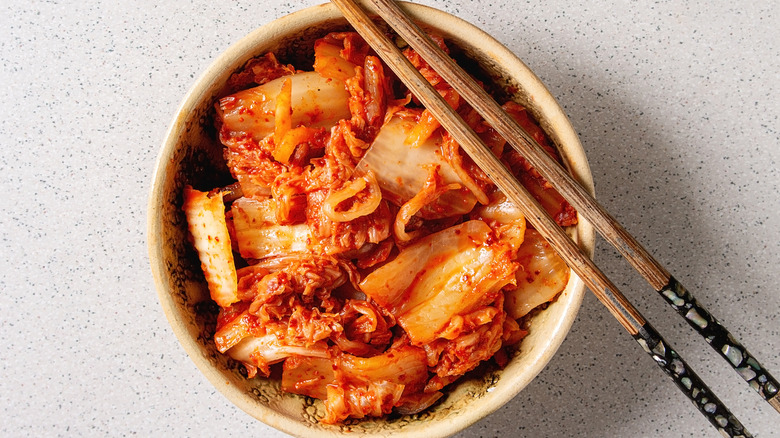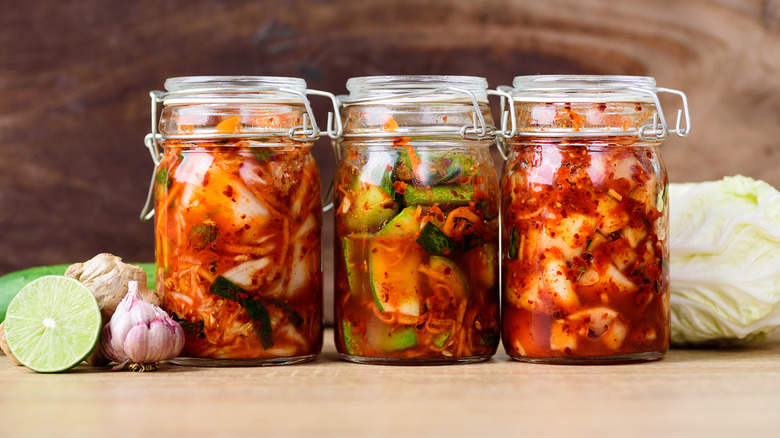What To Do About White Spots On Your Kimchi
Imagine you're planning to make some Korean food. You've bought all your ingredients, and then you open that container of kimchi that's been sitting in your refrigerator for a while, and boom: There's a cluster of questionable white spots on the surface. You might think the kimchi has gone bad, but chances are those spots are yeast, not mold. And if they're yeast, your kimchi doesn't need to go in the trash.
First, closely examine the white spots. If they're plain white (with no other colors present) and not fuzzy, you're likely looking at yeast, not mold, and your kimchi is still good to go. Obviously, if it's moldy, you'll want to discard the kimchi. However, moldy kimchi is relatively uncommon: As a fermented food, kimchi doesn't spoil easily because of its acidity. If pieces of cabbage are exposed to air, kimchi can become moldy, but as long as the cabbage stays submerged in the brine, it's protected from mold growth.
How did the yeast spots get there?
Kimchi is a fermented food that uses lactic acid, contrasting with alcoholic drinks like beer, which ferment through yeast. Yeast tends to appear in kimchi when it's exposed to air, allowing small microbes to enter. Since vegetables like cabbage naturally contain some yeast, this exposure enables the yeast to start fermenting — hence the white spots.
However, there are ways to prevent yeast growth. Firstly, storing kimchi in a cool place — ideally a refrigerator below 39 degrees Fahrenheit (but above freezing) — will help prevent it. Secondly, always use clean utensils when dipping into your store bought or homemade kimchi container to minimize extra microbial introduction. Additionally, keep the kimchi tightly covered and limit its exposure to oxygen. This also means storing it in a container with minimal empty space at the top. But be cautious: If the kimchi is still early in the fermentation process, and there's little air at the top of the container, you may need to periodically open it to release excess air generated from fermentation ("burping" the kimchi). However, yeast typically doesn't appear until a few months into the fermentation process, so this isn't usually a major concern.
Should you remove the yeast spots?
It's a good idea to skim the white yeast off the kimchi, and it's probably best to clean and cook it before use. However, this is more to ensure the flavor of the kimchi tastes as fresh as possible, not because the yeast is dangerous or unhealthy. The yeast will only appear on the surface of the kimchi (either the liquid or any pieces of cabbage poking out), so there's no need to search through your entire container for additional traces of it.
Although the yeast might not be tasty, there's no harm if you don't remove every single trace of it from the kimchi, or if you accidentally consume some. A 2022 study in the journal "Food Microbiology" conducted on this kind of yeast found no toxins in it when analyzed in a laboratory. The same study also fed some of this yeast to animals and observed no negative health effects. Researchers concluded that the yeast, particularly in small amounts, shouldn't harm humans who consume it.


